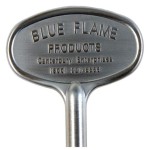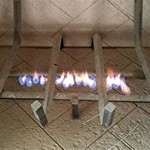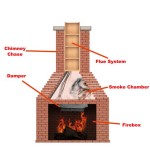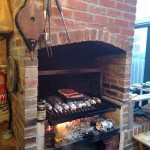Converting a Gas Fireplace to Wood Burning: A Comprehensive Guide
Many homeowners find themselves drawn to the rustic charm and authentic warmth of a wood-burning fireplace, even if their existing home features a gas fireplace. Converting a gas fireplace to a wood-burning one is a complex undertaking that requires careful planning, adherence to building codes, and potentially, professional assistance. Understanding the intricacies involved is crucial before commencing such a project.
The primary reason homeowners consider this conversion is often the desire for the ambiance and natural crackling sound associated with wood fires. Others prioritize the perceived energy independence of wood burning, viewing it as an alternative to relying on gas utilities. Whatever the motivation, it's essential to thoroughly assess the feasibility and implications of this conversion.
Safety Considerations and Building Codes
One of the most critical aspects of converting a gas fireplace to wood burning is ensuring the safety of the occupants and the structural integrity of the home. Gas fireplaces are designed with specific venting systems that are often inadequate for the intense heat and byproducts produced by wood fires. Converting without addressing the venting can lead to dangerous situations, including carbon monoxide poisoning and house fires.
Building codes vary significantly by location, and it is imperative to consult with local building officials to understand the specific requirements for wood-burning fireplaces. These codes typically address chimney construction, firebox dimensions, clearances from combustible materials, and the availability of a fresh air supply. Failing to comply with these codes can result in costly fines and, more importantly, compromise the safety of the home.
A crucial component of safety is the chimney. A gas fireplace typically uses a smaller, less robust chimney liner than is required for wood burning. Wood fires produce creosote, a highly flammable substance that can accumulate in the chimney. A properly sized and constructed chimney liner is essential for safe and efficient venting of smoke and gases. An inspection by a qualified chimney sweep is often the first step in determining the suitability of the existing chimney for wood burning.
Chimney Inspection and Modification
The chimney is arguably the most important element to inspect and potentially modify during this conversion. As mentioned, gas fireplace chimneys differ significantly from those designed for wood burning. A professional chimney sweep can assess the chimney's condition, identify any existing damage, and determine whether it meets the required standards for wood burning.
If the existing chimney is deemed unsuitable, it will likely need to be relined with a stainless steel liner that is appropriately sized for the fireplace opening and the expected heat output. The liner should extend from the base of the fireplace to the top of the chimney, providing a continuous and airtight passage for smoke and gases. In some cases, the entire chimney may need to be rebuilt to meet code requirements.
The chimney cap is another important component that must be considered. A properly designed chimney cap prevents rain, snow, and debris from entering the chimney, which can lead to corrosion and blockages. It also incorporates a spark arrestor screen to prevent embers from escaping and potentially igniting nearby combustible materials.
Firebox and Fireplace Construction Requirements
The firebox, the enclosed area where the fire is built, must also be appropriately constructed for wood burning. Gas fireplaces often have shallow fireboxes that are not designed to withstand the high temperatures generated by wood fires. Converting to wood burning may require modifications to the firebox to ensure adequate depth, proper insulation, and sufficient airflow.
The materials used in the firebox construction are crucial. Firebrick, a heat-resistant clay brick, is commonly used to line the firebox and protect the surrounding structure from the intense heat. The firebox should be sized appropriately for the intended wood burning capacity. A firebox that is too small can lead to inefficient burning and excessive smoke production, while a firebox that is too large can be difficult to heat effectively.
A damper is an integral part of a wood-burning fireplace, controlling the airflow and preventing drafts when the fireplace is not in use. The damper must be in good working order and properly sized for the chimney. A leaky or improperly functioning damper can lead to significant heat loss and increased energy bills.
The hearth, the non-combustible area extending in front of the fireplace opening, must also meet specific requirements to protect the floor from sparks and embers. The hearth should be constructed of non-combustible materials such as brick, stone, or concrete, and it must extend a minimum distance from the fireplace opening, as specified by local building codes.
Converting a gas fireplace to wood burning requires a significant investment of time and resources. It is crucial to carefully consider all aspects of the conversion, from safety considerations and building codes to chimney modifications and firebox construction. Consulting with qualified professionals, such as chimney sweeps, fireplace installers, and building inspectors, is essential to ensure a safe and successful conversion.

Want To Convert Gas Wood Fireplace Full Service Chimney

Gas To Wood Fireplace Conversion Overland Park Ks Firplace Service

Wood Burner Conversion New Jersey Fireplaces Kjb

Want To Convert Gas Wood Fireplace Full Service Chimney

Can You Convert A Gas Fireplace To Wood Burning Stove Direct Stoves Resources

Want To Convert Gas Wood Fireplace Full Service Chimney

Wood To Gas Fireplace Conversion In Wisconsin Free Quote Badgerland Waesha

Convert From Wood To Gas With A Insert The Kernel Burner

Convert Gas Fireplace To Wood
Convert To A Beautiful Wood Burning Fireplace
Related Posts








